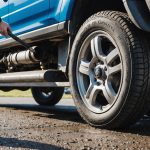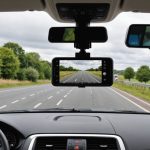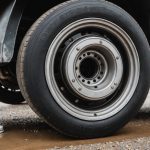Understanding Collision Avoidance Systems
Collision Avoidance Systems are integral to modern vehicle safety technology, designed to enhance driver awareness and prevent accidents. These systems employ various sensors and cameras to detect potential obstacles and hazards on the road. When a threat is detected, the system may alert the driver or, in some cases, take preventive action, such as automatic braking or steering adjustments.
Key Components and Technologies
Collision Avoidance Systems rely on several critical technologies, including radar, lidar, and ultrasonic sensors. Radar systems measure the distance and speed of approaching objects, while lidar uses laser beams for precise detection. Ultrasonic sensors provide short-range detection, crucial for identifying obstacles during parking manoeuvres.
Also to discover : Essential Wheel Bearing Care: A Crucial Step to Avoid Commercial Truck Accidents
Calibration and Performance
Calibration is essential to maintain optimal system performance. Proper calibration ensures all sensors and cameras accurately register their surroundings, thereby increasing vehicle safety technology effectiveness. If calibration is compromised, it might lead to false alarms or fail to detect genuine threats. Regular maintenance checks are recommended to keep the system in top condition.
These systems represent a significant advancement in vehicle safety technology, aiming to reduce human error and improve road safety. As technology evolves, these systems become more sophisticated, integrating with other driver assistance technologies for comprehensive vehicle safety solutions.
Topic to read : Enhancing Vehicle Safety: The Essential Role of Undercarriage Cleaning
Importance of Calibration
Ensuring accurate calibration is crucial for maintaining essential safety protocols and enhancing system performance metrics. An improperly calibrated system can significantly increase accident risk, as even minor discrepancies can cause major failures. Accurate calibration is vital in collision systems, where even a small error can lead to severe real-life consequences, including unintended collisions or system malfunctions.
Calibration accuracy directly affects system performance metrics by maintaining the integrity of measurements and ensuring the reliability of the system’s responses. Systems that are rigorously calibrated tend to have a lower accident risk, as they accurately interpret and respond to environmental inputs. This secure functioning promotes confidence among users and helps regulatory bodies establish effective safety protocols.
Reports from real-world scenarios underline the importance of proper calibration. Instances where failure to calibrate collision systems accurately led to significant issues highlight the need for routine checks and adjustments. These safety-critical situations emphasise the necessity for consistent calibration to ensure optimum system performance and adherence to safety protocols.
In summary, the calibration’s significance extends beyond merely fine-tuning a system; it plays a central role in ensuring safety, enhancing performance, and preventing potential mishaps.
Step-by-Step Calibration Process
When calibrating any system, it is crucial to focus on accuracy and precision. Proper equipment and setting make a huge difference. Each step mentions necessary tools and the specific environment required.
Preparing for Calibration
Before starting calibration, ensure the environment is conducive to precise measurements. Select a flat surface with optimal lighting. This reduces errors and aids in obtaining consistent results.
Tools and Equipment Needed
Equip yourself with essential tools:
- Calibration software
- Measurement devices (e.g., tapes, levels)
- Specific technical manuals
These are vital in following calibration steps and adhering to technical guidance.
Step-by-Step Calibration Instructions
-
Select Environment: Pick a flat, well-lit area to minimize anomalies. An incorrect environment may lead to inaccurate data.
-
Gather Tools: Assemble the list of tools and equipment as outlined. Each item plays a role in the accuracy of the system’s performance.
-
Follow Instructions: Use the technical guidance contained within each system’s manual. This includes adjusting parameters and ensuring the alignment is accurate.
These calibration steps are essential for ensuring collision avoidance systems operate within designed parameters, maximizing safety and functionality. By meticulously following these steps, you can expect reliable system performance.
Troubleshooting Common Calibration Issues
Experiencing calibration troubles in collision avoidance systems can be frustrating. Identifying the signs early on ensures prompt resolution. These systems may show signs of failure through error messages, inconsistent performance, or even false alarms. Recognising these indicators is the first step toward effective calibration troubleshooting.
When faced with these symptoms, consider several troubleshooting steps. To address system errors, start by checking for any loose connections or components. Ensuring that sensors and cameras are clean and unobstructed can often resolve minor calibration failures. Reviewing the system’s software updates is also crucial, as outdated software can lead to incorrect system behavior.
However, some issues may require professional intervention. If the system still malfunctions after basic troubleshooting, or if it displays complex error codes, seeking help from a qualified technician is advisable. These professionals have the expertise to diagnose and rectify problems that may not be evident to users.
In some cases, users might be tempted to ignore minor issues, hoping they resolve independently. However, minor calibration discrepancies can escalate, affecting overall performance. By attending to these promptly, you maintain the system’s effectiveness and safety.
Safety Considerations During Calibration
When engaging in calibration, it’s crucial to adhere to safety protocols to ensure both personal safety and vehicle integrity. Ignoring proper procedures can lead to inaccuracies and potential hazards.
Importance of Safety Protocols
Following safety protocols is imperative for maintaining accurate calibration results and avoiding damage. Always ensure that tools and equipment are in proper working condition. Misuse or malfunctioning equipment can cause harm both to the technician and the vehicle. Moreover, adequate ventilation and protective gear, such as gloves and goggles, should be utilised to prevent exposure to potentially harmful substances.
Ensuring Personal and Vehicle Safety
To prioritise safety, verify that all vehicle systems are stable and deactivated before beginning. This step minimizes risk of accidental activation which might lead to injury. Work on a flat, stable surface to prevent movement during calibration which could result in imprecise results or equipment tipping.
Risks of Incorrect Calibration
Incorrect calibration can not only lead to safety hazards but also compromise vehicle performance. Misalignments might cause erratic vehicle behaviour, affecting aspects like steering and braking systems. Long-term neglect can lead to more severe mechanical failures, posing a risk to both the operator and others on the road. Following meticulous safety protocols mitigates these risks effectively.
Recommended Tools and Resources
Calibration of collision avoidance systems is a critical task that requires precision and expertise. It’s essential to have access to the right tools and resources.
Tool Recommendations
Precision is key for calibrating these advanced systems. A laser-based alignment tool ensures accurate sensor positioning, while specialized calibration targets are indispensable for authentic system adjustments. Moreover, software solutions that integrate with vehicle diagnostics offer real-time data, thus enabling meticulous fine-tuning.
Resources for Further Learning
Continuous advancement in technology demands that professionals stay updated. Online platforms such as webinars or industry forums provide in-depth learning opportunities. Training sessions and workshops by manufacturers are highly valuable in bringing hands-on experiences, showcasing best practices, and delving into advanced calibration techniques.
Utilizing Manufacturer Guidelines
Each vehicle’s collision avoidance system has unique specifications. Relying on the manufacturer’s guidelines is of utmost importance. These documents offer detailed instructions tailored to specific models and systems, ensuring the accuracy and reliability of calibration. Following these guidelines helps to avoid errors and extend the system’s life, effectively protecting the vehicle and its passengers.
The Future of Collision Avoidance Systems
As the automotive industry accelerates towards a future dominated by innovation, emerging technologies in collision avoidance systems are at the forefront, promising to revolutionise vehicle safety. These systems harness advancements in sensors, artificial intelligence, and machine learning to anticipate and mitigate potential accidents before they occur.
The landscape of vehicle innovations is evolving rapidly, with manufacturers integrating more sophisticated systems into their designs. For instance, technologies such as LIDAR and augmented reality displays are becoming more prevalent. These developments not only enhance safety but also play a pivotal role in shaping regulatory standards. As more vehicles are equipped with these technologies, there is a growing need for precise calibration practices to ensure optimal functionality.
Predictions about future technologies in this field suggest that vehicles will soon be capable of communicating with each other and with infrastructure to further improve collision avoidance. This could lead to a significant shift in how these systems are maintained and calibrated, requiring more dynamic and adaptable solutions. Thus, the implications of these advancements extend beyond mere safety, touching on calibration practices and influencing the larger ecosystem of vehicle maintenance and operation.











